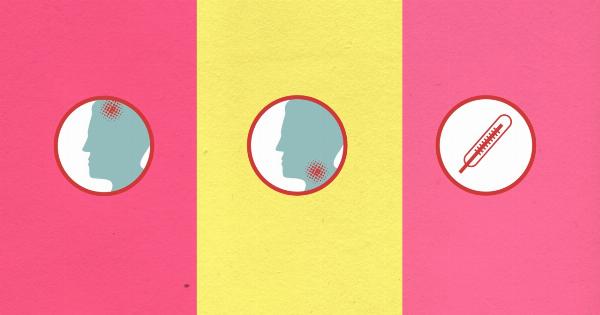Headaches are a common ailment that can significantly impact your daily life. Whether it’s a tension headache, migraine, or cluster headache, finding relief is essential.
While over-the-counter pain medications may provide temporary relief, they aren’t always the best solution. Fortunately, there are several practical tips you can try to ease your headache naturally. In this article, we will explore these tips and provide you with effective strategies for headache relief.
1. Stay Hydrated
One of the most common causes of headaches is dehydration. Many people underestimate the importance of staying hydrated throughout the day. Dehydration can lead to a decrease in blood volume and oxygen flow to the brain, triggering headaches.
To prevent dehydration, ensure you drink an adequate amount of water daily. The recommended daily intake is around eight glasses, but it may vary depending on factors such as activity level and climate.
2. Manage Stress
Stress is a leading cause of tension headaches. It’s crucial to identify and manage stress triggers in your life. Engaging in stress-reducing activities such as exercise, meditation, or deep breathing exercises can help alleviate headaches.
Taking breaks and practicing relaxation techniques throughout the day can also prevent stress from building up and leading to headaches.
3. Maintain a Regular Sleep Schedule
Irregular sleep patterns can contribute to headaches. Lack of sleep or oversleeping disrupts the body’s internal clock and can trigger migraines or tension headaches.
Try to establish a consistent sleep schedule and ensure you get an adequate amount of sleep each night, typically seven to eight hours for adults. Creating a relaxing bedtime routine and avoiding caffeine or electronic devices before bed can also improve the quality of your sleep.
4. Practice Good Posture
Poor posture can strain the muscles in your neck and shoulders, leading to tension headaches. Maintaining good posture while sitting and standing helps to prevent muscle tension and reduce the likelihood of headaches.
Ensure that your workspace is ergonomically designed and make a conscious effort to sit and stand up straight throughout the day. Regular stretching and strengthening exercises for the neck and upper back can also improve posture and alleviate headaches.
5. Limit Caffeine Intake
While caffeine can provide temporary relief for headaches, excessive consumption can have the opposite effect. Suddenly stopping or decreasing caffeine intake can also lead to withdrawal headaches.
If you regularly consume caffeinated beverages, such as coffee or soda, try to gradually reduce your intake to avoid withdrawal symptoms and reduce the frequency of headaches.
6. Apply Cold or Hot Compresses
Applying cold or hot compresses to the affected area can help alleviate headaches. For tension headaches, a cold compress can numb the pain and reduce inflammation.
Alternatively, a hot compress or warm shower can relax tense muscles and improve blood circulation, providing relief for migraines. Experimenting with both cold and hot compresses can help you determine which works best for your specific type of headache.
7. Avoid Trigger Foods
Certain foods may act as triggers for headaches, especially migraines. Common culprits include aged cheeses, chocolate, alcohol, processed meats, and foods containing monosodium glutamate (MSG).
Keep a food diary to identify any patterns between your diet and headaches. By avoiding your personal trigger foods, you can reduce the frequency and intensity of headaches.
8. Engage in Regular Exercise
Exercise has numerous benefits for overall health, including headache relief. Physical activity releases endorphins, which act as natural painkillers and mood enhancers.
Regular exercise also improves blood flow and reduces muscle tension, both of which can contribute to headache relief. Aim for at least 30 minutes of exercise most days of the week, whether it’s a brisk walk, swimming, or cycling.
9. Practice Relaxation Techniques
Relaxation techniques such as deep breathing exercises, progressive muscle relaxation, and guided imagery can help reduce the frequency and severity of headaches.
These techniques promote relaxation, reduce stress, and provide relief from headache symptoms. Incorporating these practices into your daily routine can improve your overall well-being and alleviate headaches.
10. Seek Professional Help
If you consistently experience severe or persistent headaches, it’s essential to consult a healthcare professional. They can help identify any underlying causes and develop a personalized treatment plan.
A healthcare provider may prescribe medication, recommend therapies, or suggest lifestyle modifications to manage your headaches effectively.
Conclusion
Headaches can significantly affect your quality of life, but implementing these practical tips can provide relief and prevent future occurrences.
Staying hydrated, managing stress, maintaining a regular sleep schedule, practicing good posture, and limiting caffeine intake are just a few of the effective strategies you can employ. Additionally, applying cold or hot compresses, avoiding trigger foods, engaging in regular exercise, practicing relaxation techniques, and seeking professional help when necessary can all contribute to easing your headaches.
By taking a proactive approach and making lifestyle adjustments, you can regain control over your headaches and enjoy a better quality of life.































